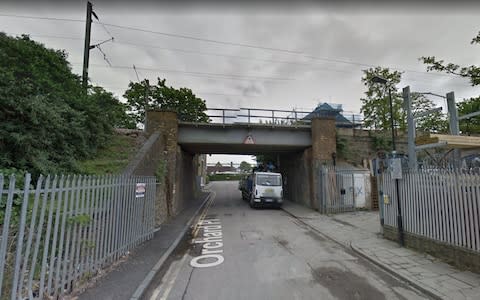Did pensioner spontaneously combust? Bafflement surrounds 'horrific' death

Spontaneous human combustion is a phenomenon as rare as it is puzzling. But such is the bafflement surrounding the death of a pensioner who caught fire in the street, some are now speculating that the gruesome scientific anomaly is to blame.
John Nolan, 70, died from “horrific” burns after being found ablaze near his home in North London in September. Detectives have now said that after weeks of investigation they have found no obvious cause for the fire.
Spontaneous human combustion is a fiercely debated process, characterised by near-total destruction of the body with little surrounding damage.
It has been attributed to fewer than 200 deaths in history and was famously depicted in Dickens’ Bleak House where the alcoholic Krook combusts with no apparent cause.
Mr Nolan, described as a “gentle, nice man”, had no accelerants on his body, according to police, and Fire Service investigators found no source of ignition.
Yet relatives later said he suffered burns to his internal organs.
Originally from County Mayo, the former construction worker was airlifted to Colchester hospital and died surrounded by family members after doctors withdrew life-support.
PC Damien Ait-Amer, who is investigating the death, said: “Mr Nolan was a well-liked member of the community and none of our enquiries so far have indicated that he had been involved in a dispute of any sort, nor does any account given by witnesses suggest that he had been in contact with another person at the time of the fire.”
The Metropolitan Police is now appealing for witnesses to help them solve the case.

Bernard Knight, who conducted more than 25,000 autopsies during 31 years as a Home Office pathologist, said the “wick effect” can explain the phenomenon whereby the clothing of a victim soaks up melted fat and accelerates a fire.
But he said it was “ridiculous” to suggest a body could ignite without an external cause. “For someone to walk out onto the streets and just burst into flames is extremely peculiar,” he told The Daily Telegraph.
“In the course of my career I saw maybe three or four cases of so-called spontaneous combustion, but they were all indoors near an open fireplace.
“In once case the body had burnt through the floor.” He added: “This is very unusual because it took place outside, but a failure to find a cause does not mean there isn’t one.”
In 2011 an Irish coroner designated spontaneous combustion as the cause of death of a 76-year-old Michael Faherty.
His body was found badly burnt in fireplace of his home but experts said this had not been the cause of the blaze.
More recently, a Mauritian woman burst into flames while sitting on a bench in Flensburg, north Germany.
Professor Knight said that, statistically, alcohol was a common factor in deaths attributed to spontaneous human combustion.
Mr Nolan’s nephew, Kevin Byrne, told the Irish Sun: "His face and head were swollen and his hair was burnt off, it was really horrible stuff."
"How does a man just go on fire in the middle of the street?
"My uncle had a stroke many years ago and he was vulnerable. He wasn't working and he wasn't even a great conversationalist, he was quiet and needed care.”

 Yahoo News
Yahoo News 